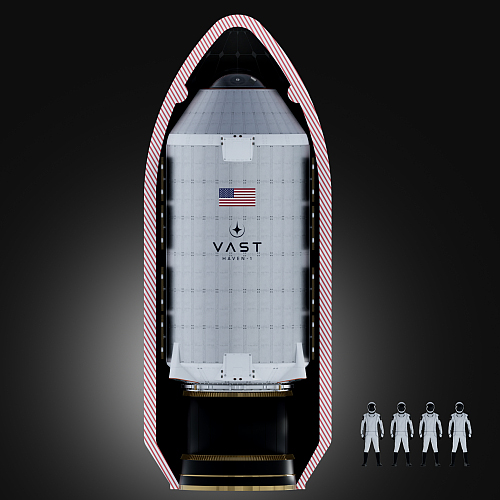Stratolaunch’s giant airplane Roc successfully completes first drop test of payload
On May 13, 2023 Stratolaunch’s giant airplane Roc took off with a Talon-0 engineering test vehicle attached to its fuselage and successfully released that test vehicle, completing the plane’s first drop test.
Saturday’s outing was the 11th flight test for Stratolaunch’s flying launch pad — a twin-fuselage, six-engine airplane with a record-setting 385-foot wingspan. The plane is nicknamed Roc in honor of a giant bird in Middle East mythology.
Roc carried the Talon-A separation test vehicle, known as TA-0, during three previous test flights. But this was the first time TA-0 was released from Roc’s center-wing pylon to fly free. The release took place during a four-hour, eight-minute flight that involved operations in Vandenberg Space Force Base’s Western Range, off California’s central coast.
With this success the company appears ready to fulfill its military contract to use its Talon-1 payloads to fly hypersonic flight tests.
On May 13, 2023 Stratolaunch’s giant airplane Roc took off with a Talon-0 engineering test vehicle attached to its fuselage and successfully released that test vehicle, completing the plane’s first drop test.
Saturday’s outing was the 11th flight test for Stratolaunch’s flying launch pad — a twin-fuselage, six-engine airplane with a record-setting 385-foot wingspan. The plane is nicknamed Roc in honor of a giant bird in Middle East mythology.
Roc carried the Talon-A separation test vehicle, known as TA-0, during three previous test flights. But this was the first time TA-0 was released from Roc’s center-wing pylon to fly free. The release took place during a four-hour, eight-minute flight that involved operations in Vandenberg Space Force Base’s Western Range, off California’s central coast.
With this success the company appears ready to fulfill its military contract to use its Talon-1 payloads to fly hypersonic flight tests.



